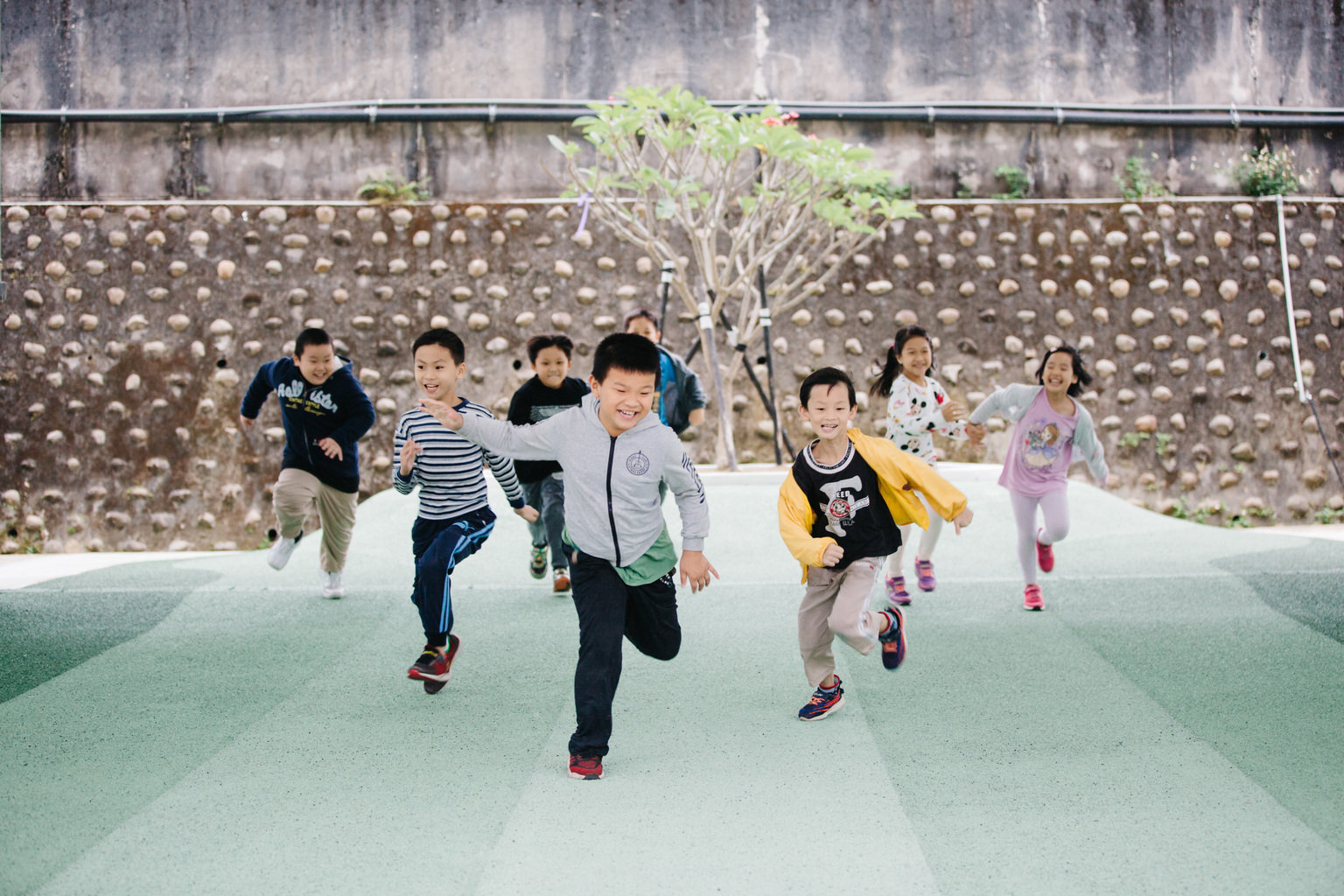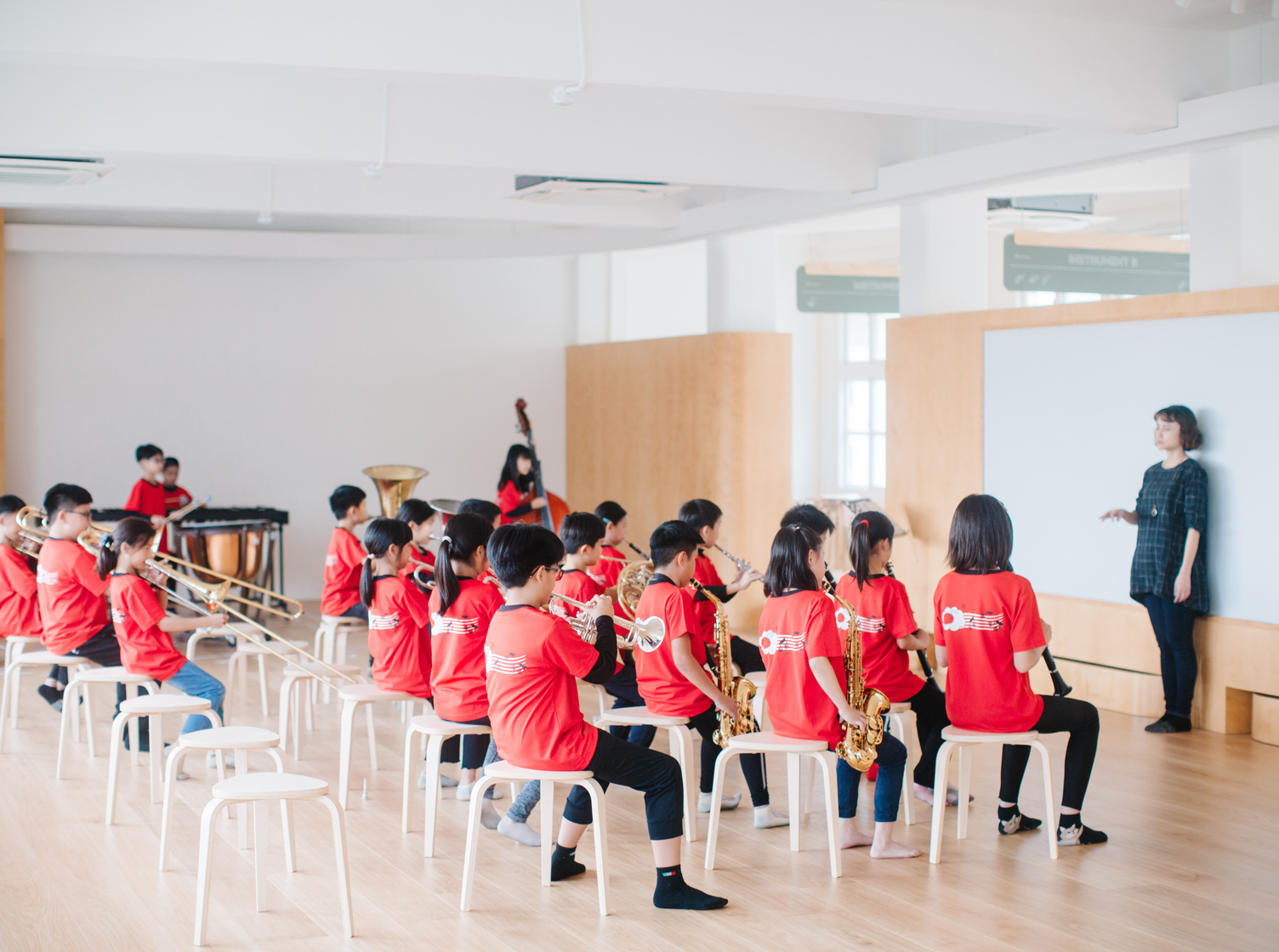Turning Atrium Design into Opportunity of Change to Set off the Domino Effect of Beauty
-Exclusive Interview with Principal Huang Chun-Ting of Fenglin Elementary School
“To me, ‘Design Movement on Campus’ was the beginning of problem solving,” exclaimed Principal Huang Chun-ting of Miaoli Fenglin Elementary School shortly into the interview.

Use the Opportunity of “Design Movement on Campus” to Solve the Problems that Have long Troubled Teachers and Students
Running Fenglin Elementary School, Huang Chun-ting faced three problems: one, changing the imagery at the main gate to create more recreational space for community residents; two, rebuilding the dangerous and outdated outdoor playground to ensure safety of children; three, renovating the old atrium and removing and replacing the broken bulletin board. “For a long time, school teachers and children had been discussing these problems, but campus improvement projects in the past mostly demanded schools to propose own design ideas and allocate own budget. To our school in a remote area, it would be rather difficult to find a design team to help with the planning.”
It was the reason why she was immediately intrigued when she learned that schools only needed to propose needs and did not have to submit own design and budget plan in “Design Movement on Campus” executed by TDRI under the commission of Ministry of Education, and it seemed like a great opportunity to solve the problems that had troubled her for quite some time. Considering the budget of renovation, Huang quickly narrowed down from three problems to the relatively cheaper target of the “atrium,” and submitted application. With the help of TDRI, Principal Huang selected “MakerBar” as the design team, making it possible to realize the renovation of the atrium that had been on the minds of the teachers and students for some time.

Splendid Colors not the only Solution! Leave Blanks to Create Room of Imagination
“When we applied, we already had some ideas, such as repairing the atrium floor and replacing the ugly bulletin board, so that it would not be a conventional rectangle,” laughed Huang Chun-ting. They did not expect that when TDRI and MarkerBar visited the campus for inspection, they saw how children ran around in the atrium, and proposed more interesting design ideas on top of the school’s existing ideas, such as changing the floor tiles to green soft surface for students to freely run around, like an extension of the track. “To us, these were things that never came across our mind, but MakerBar told us that when they first saw the scene of children running in the atrium, this idea immediately popped up.”
There were more design inspirations beyond the expectation of the school. “MakerBar” also saw that tree roots had penetrated and broken the flower bed at the end of the atrium, so they planted a new plumeria in the flower bed, becoming the new visual focal point; as for the design of the bulletin board, MakerBar answered the school’s demand of “not a rectangular or square board” with an oval bulletin board, and boldly adopted an all-white design, hoping to keep the background blank and preserve viewers’ attention to the works on the bulletin board.
However, Huang Chun-ting confessed that, when she first saw MakerBar’s draft design of the bulletin board, the school struggled to embrace the idea, after all, the teachers had this impression that splendid colors were children’s favorite. The teachers had taught for long periods of time and no one was confident that the children would warm up to MakerBar’s use of simple color. “In the end, I thought, if we followed the school’s idea, the design probably would not break old conventions, and since we had the help of a design team, we should really respect their professional opinions and expertise!”

Set off the Domino Effect of Beauty, Steer the School in a more Ideal Direction
Beyond anyone’s expectation, the designs that surprised the school or made the school uncomfortable have earned the praises of all the teachers and children, and even alumni—the atrium and its floor lined with green soft surface attract many kids to run and play in it; the children also look comfortable waiting here for shuttle bus after school; the flower bed has become a resting area for the kids and alumni, and it also acts as the end or starting point of the atrium, connecting with the slope and atrium; the oval and white bulletin board has been imagined by the children as an aircraft cabin or submarine, and from an adult’s perspective, when the children’s hand-drawn posters are displayed here, it seems to turn into a mini gallery with the proper lighting. “It just looks beautiful hanging their works here!”
With the successful experience of renovating the atrium, Huang Chun-ting invited MakerBar back the following year to help with the renovation of the playground across from the atrium. “With ‘Design Movement on Campus’ acting as a starting point, MakerBar has helped me to solve two out of the three problems that troubled me at first!” Huang further pointed out that “Design Movement on Campus” is not just renovation of a single space, it has also inspired the school of new ideas. When there is such an attractive space on campus as an example, if there are any needs of spatial transformation in the future, other design teams will also want to produce comparable designs after seeing the atrium. Perhaps, to Fenglin Elementary School, ‘Design Movement on Campus’ has set off the domino effect of beauty where the atrium is the starting point, steering the school in an ideal direction one step at a time.




